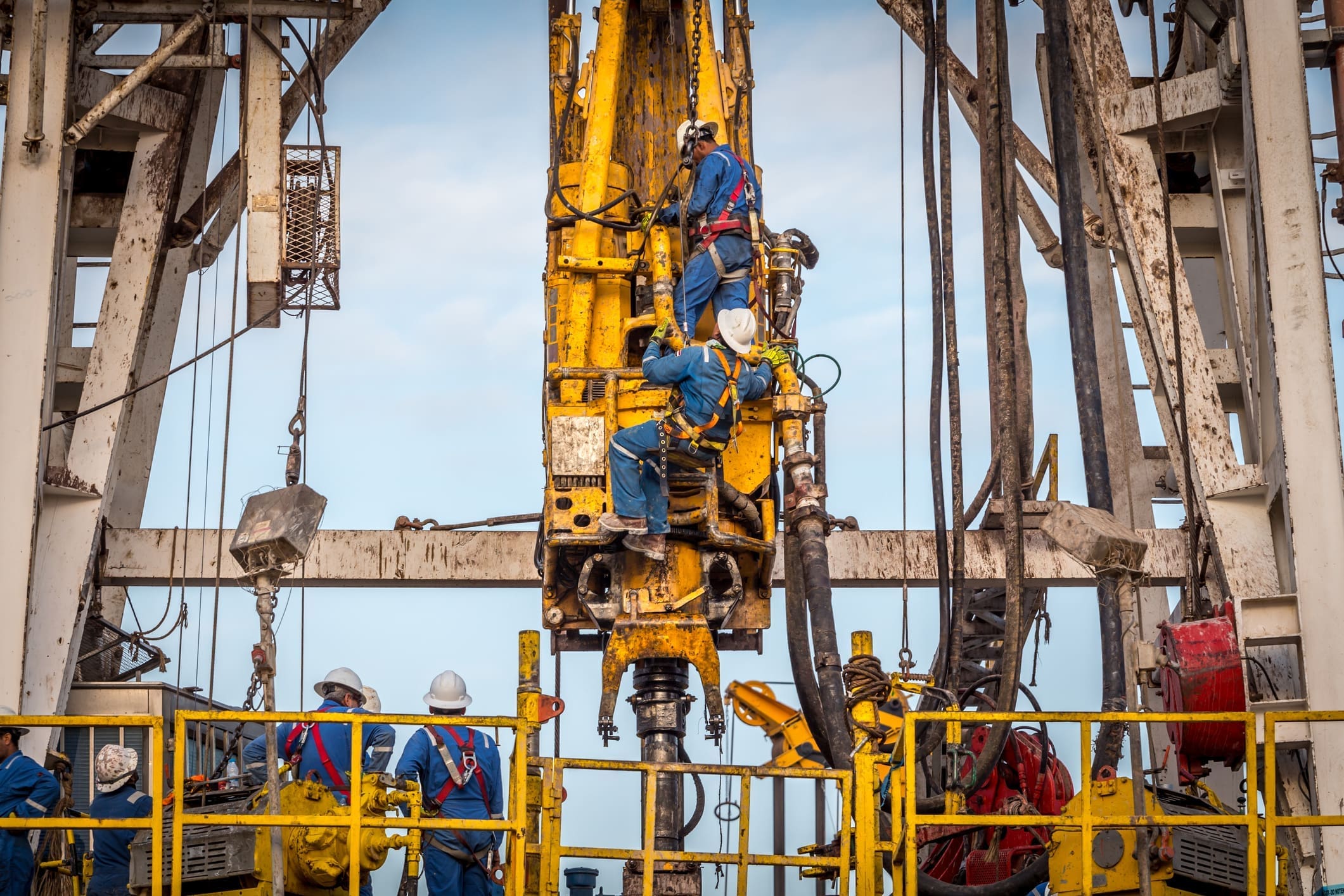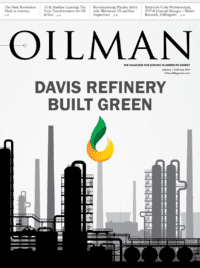Protecting workers from falls is an important aspect in the extraction, transportation, and fixed facility refining of oil and gas. The hierarchy of fall protection specifies that hazards should be eliminated or protected by passive systems such as guardrails; when that isn’t possible. Fall Restraint and Fall Arrest systems help keep workers safe. Arrest systems typically include an anchor, body harness, connector, and a means for rescue in the event of a fall. Systems for Fall Arrest should be simple to use and straight forward to maintain. Ensuring proper training and selection of equipment is critical.
Fall Protection Hierarchy
Each workplace application should be rigorously evaluated with the hierarchy of fall protection that is set forth by the ANSI (American National Standard Institute) Z359.2 Minimum Requirements for a Comprehensive Managed Fall Protection Program. The essence of the hierarchy is to start at the top and only move further down the list of possible options if no other feasible means exist. Here is an overview:
- Eliminate: Complete removal of the fall hazard via design or process.
- Barrier: Prevention of access to the fall hazard.
- Fall Restraint: System that is properly configured to keep a worker’s center of mass at least 1.5 feet away from a fall hazard.
- Fall Arrest: System that is set up to safely stop a worker if a fall occurs.
The majority of a safety professional’s time should be invested in eliminating hazards because it requires no effort for workers to be safe at all times. An example of eliminating a hazard would be performing a routine visual inspection with a drone rather than by a worker on a ladder.
The second priority for a safety professional is to provide barriers which require minimal training and don’t necessitate rescue plans. Examples of barriers are erecting a guardrail around a platform edge or taking work that is being performed by a ladder and performing it in a guarded lift.
Fall Restraint systems have one huge advantage over Fall Arrest systems: it is not possible for a worker to fall if it is set up correctly. Not having the risk of a fall means that a rescue plan isn’t required. One example of converting a system from Fall Arrest to Fall Restraint would be protecting a worker accessing a five-foot wide walkway abutting a wall with fixed anchor points on one side and an unprotected edge on the other side. If access to the walkway is performed with a six-foot dual leg lanyard jumping from anchor to anchor, then the worker is in Fall Arrest because there is a risk that they can access the unprotected edge. To convert this application to Fall Restraint, the worker needs to be positioned at all times so that they can’t access the unprotected edge. This can be accomplished by installing a continuous rigid rail system with travelling trolley and providing the worker with a three-foot non-shock lanyard. As the worker moves along the platform, the trolley follows along, and the lanyard keeps them safely positioned a couple of feet back from the unprotected edge.
Fall Arrest, quite frankly, is a last resort. By allowing fall events to occur during the normal course of work, a significant amount of preparation and training is required. Starting with preparation, care needs to be made to ensure that adequate fall clearances exist, swing fall risks are considered, and proper connecting equipment is selected. As an example, consider preparing to service light fixtures on a 20-foot by 20-foot square shaped unprotected platform that is accessed by climbing a ladder 50 feet and entering via a hatch with an anchor point in the center of the platform. Now, visualize looking at the top view of the platform and seeing that it is supported by four HSS columns that are located at the four tips of an imaginary plus sign (+) and with four light fixtures located at the tips of an imaginary X. Continuing to imagine the platform from the top view, consider if the worker connects a rope between their harness and the center-of-platform anchor point so that they can access the four light fixtures. What are the considerations of this Fall Arrest application?
- Fall clearances – at 50 feet they should be more than adequate.
- Swing Fall – in the event of a fall, the worker is at risk from swinging the 10 feet from a corner (X location) and into one of the HSS beams (+ location). The impact from the swing fall could cause serious harm.
- Connector – in the event of a fall, the rope may shear when it comes into contact with the unprotected edge. An overhead davit could be installed to reduce the risk of the connector coming in contact with the edge. It is critical that all instructions and labels from the manufacturer of fall protection connectors are evaluated to ensure that they are the proper product for a given application.
- Rescue – after a fall event where the worker is arrested, they will be suspended from the platform and will need to be rescued promptly. A designated aerial lift that workers have been trained on specifically to rescue fallen workers from the unprotected platform is an example of an adequate rescue method that can be completed quickly. Another means of rescue may include pre-designated personnel utilizing descending equipment to perform an assisted rescue, a method that requires extensive hands-on training.
Training
Training should focus on hands-on product selection, eliminating misuse, understanding regulations, identifying hazards, and practicing rescue. An intensive two- or three-day course, commonly called Competent Person Training, is the recommended starting point for training employees on fall protection systems.
Hands-on training should include addressing applications that arise in the field by having it either performed on-site or in mock facilities. Examples of applications are ladder climbing, confined space access, and derrick maintenance. Trainers should simulate these real-world scenarios and break them into manageable steps that can be methodically managed. This application-specific process should start with working through the hierarchy of fall protection. With all hazards identified, they can be carefully considered and planned for.
Bradley Dillon is Vice President of Product Development at Pure Safety Group, the largest independent provider of height safety products and services, and parent
company of Guardian Fall Protection, CheckmateandTy-Flot.







